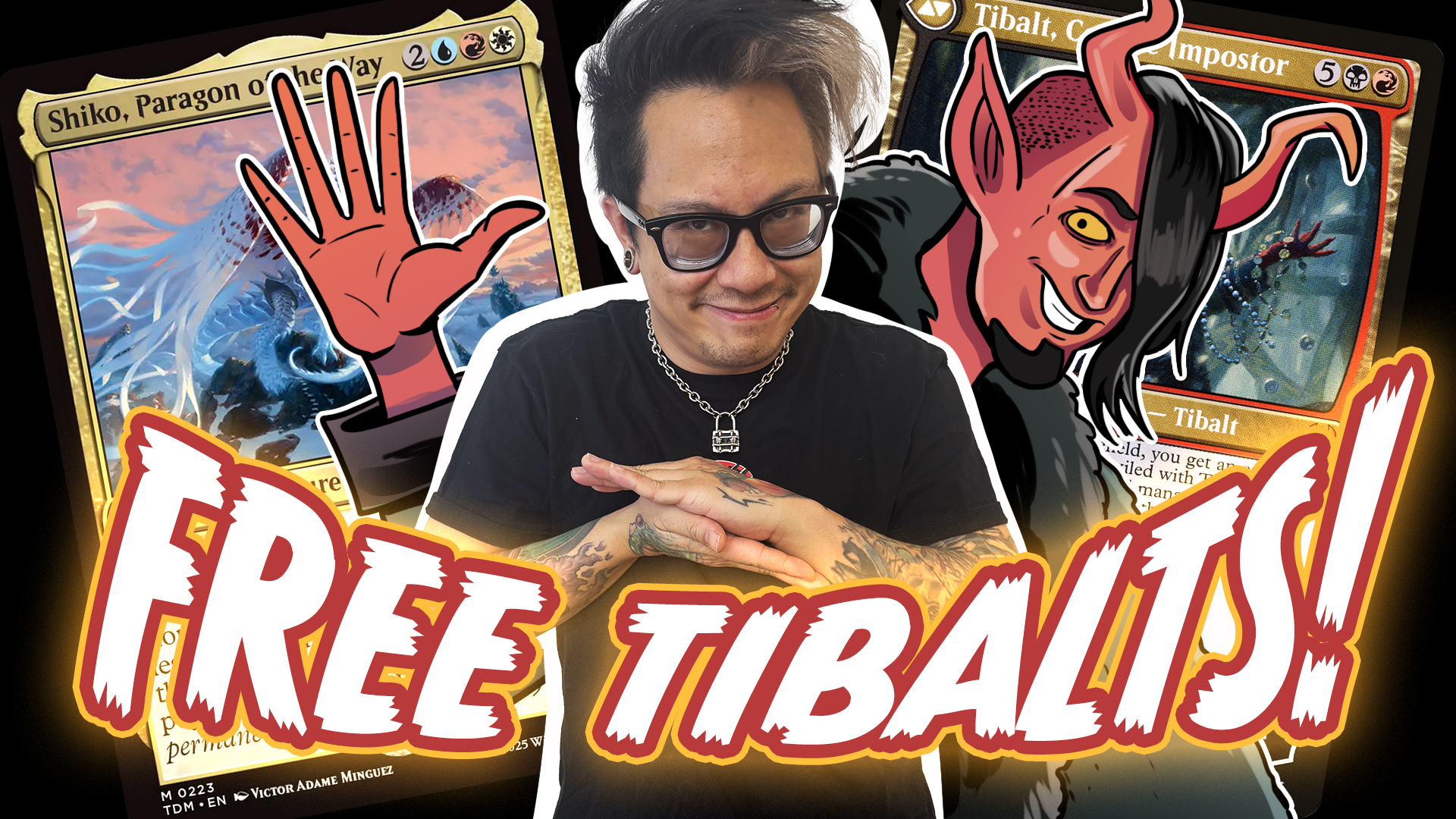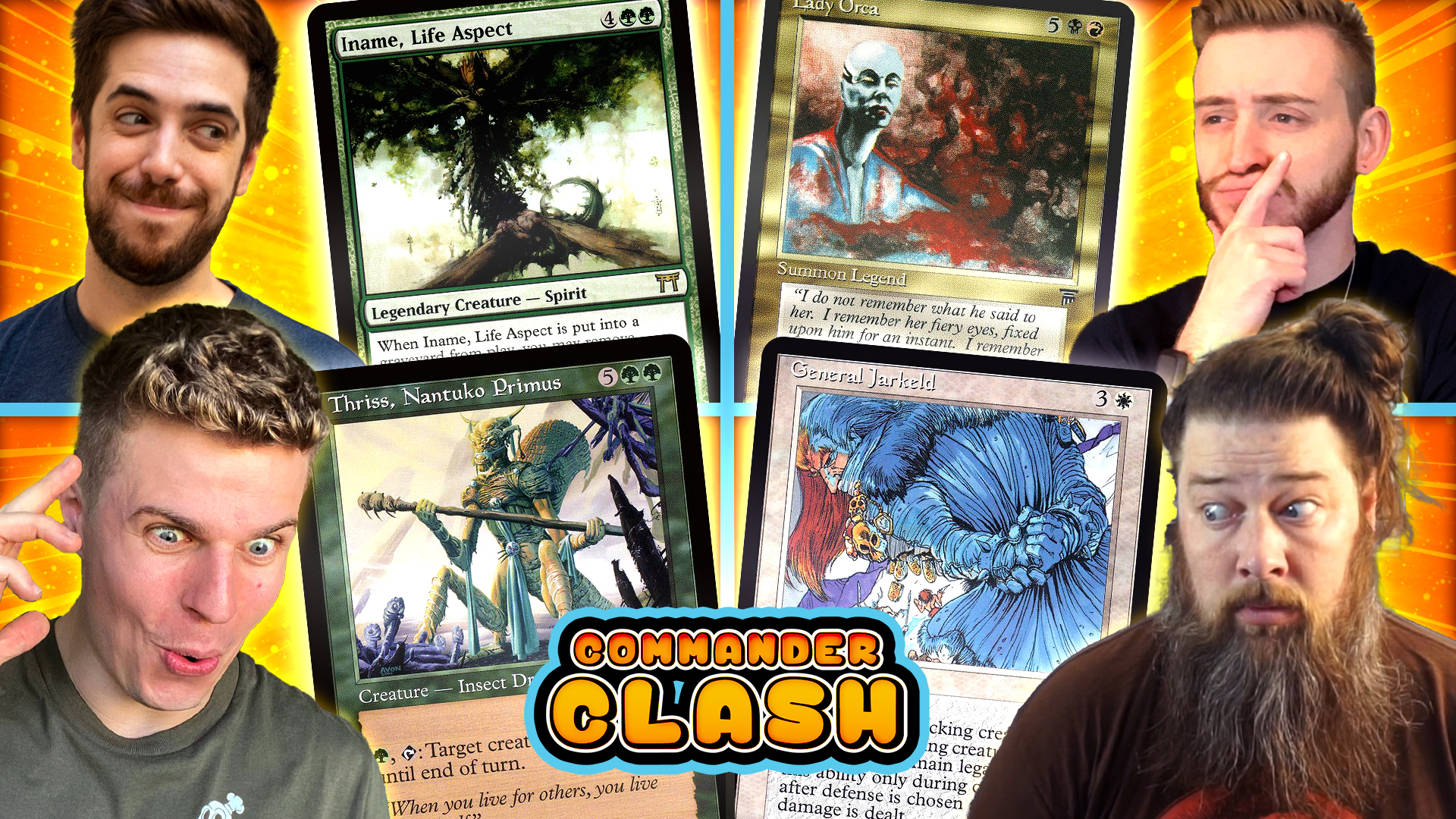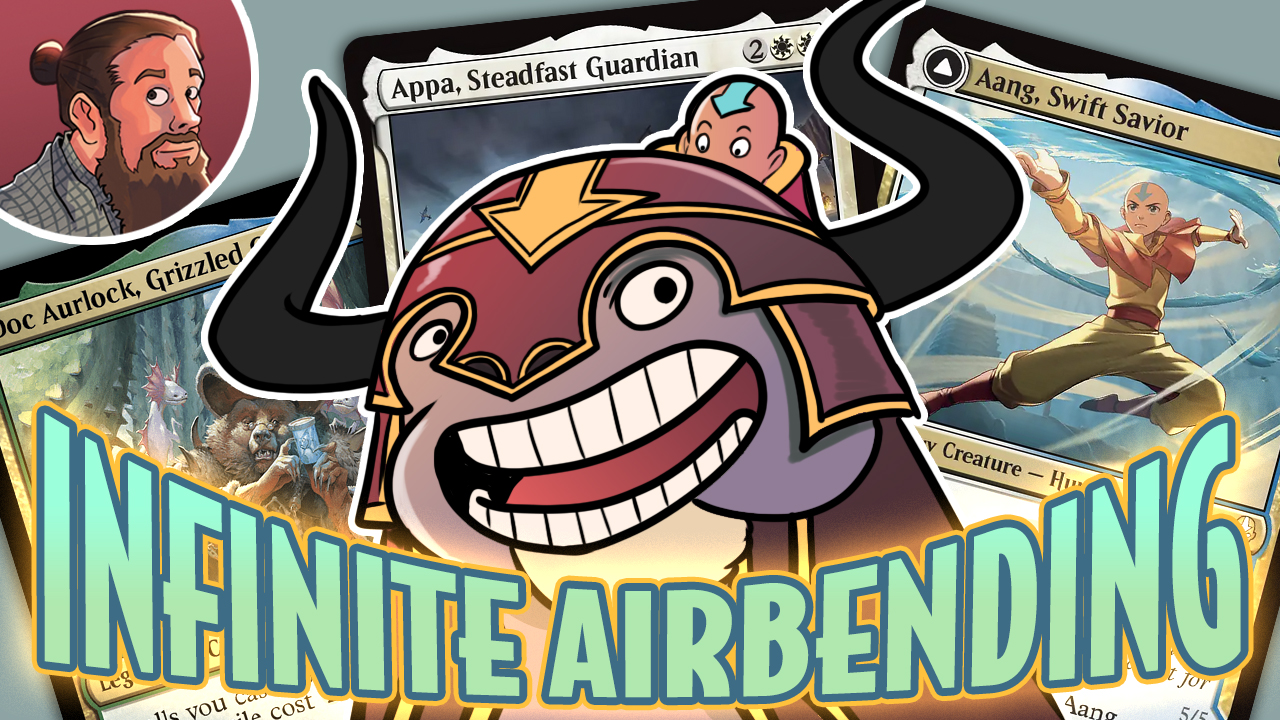Building around the New-to-Historic Cards on Arena
This week, we got some huge announcements about Magic Arena, the most exciting being that Wizards is working toward putting Pioneer on the client! While it will likely take a while to actually be able to play Pioneer, we got some good news for the more immediate future as well: Wizards will fully support Historic with an evergreen competitive mode starting in January! This news, combined with the knowledge that sooner or later, we'll have a real format in Pioneer to replace Historic, has actually rekindled my interest in Historic. While I don't expect it to become one of my most played formats, it does seem like a good way to fill time when Standard is dull or broken and Pioneer is still on the horizon. Plus, Wizards is adding a bunch of new cards to the format.

Initially, there was talk about Wurmcoil Engines, Dark Confidants, and Brainstorms coming to Historic, which I found concerning. The initial idea of Historic was that players would be able to continue to play their cards after they rotated from Standard, and adding a bunch of super-pushed cards each quarter had the potential to basically function like rotation, by making cards that players already had in their collection unplayable (from a competitive perspective, at least). Thankfully, the first batch of new cards does exactly the opposite: rather than making the cards you already own less playable, they seem to power up decks and tribes that are close to being good enough to see play in Historic but not quite all the way there. While cards like Soul Warden, Goblin Matron, and Elvish Visionary don't have anywhere near the raw power as Wurmcoil Engine or Dark Confidant, they will be staples in specific decks. As a result, the Elves, Goblins, and lifegain-matters cards sitting in your collection since rotation suddenly have more value since they might actually be at least semi-competitive in Historic, thanks to the new additions.
As such, we're going to take a look at many of the new cards coming to Historic this week and see where they fit into the format. What sorts of decks can we build with these cards? Let's find out! Before we do, a quick reminder about the Historic card pool: along with the 20 new cards we're talking about today, Historic features all of the sets currently in Standard along with Dominaria, Ixalan block, and Core Set 2019, so if you're wondering about why a card is or isn't in a deck, keep in mind that these are the only sets we have to work with in Historic at the moment.
Lifegain Cards


Let's kick things off with two of the cards that might end up having the most impact on Historic: Serra Ascendant and Soul Warden. Both of these cards see play in Modern in Soul Sisters lifegain-style decks, and both are actually very powerful in the right shell. More importantly, both cards actually have a lot of good support pieces in Historic, to the point where Wx Lifegain could be a strong archetype in the format. Here's my list as a starting point:

The deck's goal is simple: gain life and use that lifegain to our advantage. Soul Warden immediately becomes the best source of repeatable lifegain in the format, making it the perfect way to power up Ajani's Pridemate. Meanwhile, Serra Ascendant takes a bit of work to get going, but cards like Ajani, Strength of the Pride and Linden, the Steadfast Queen have the potential to gain big amounts of life at once, especially if we have an Angel of Vitality on the battlefield, which—combined with smaller amounts of life from Impassioned Orator, Soul Warden, and friends—can turn Serra Ascendant into a huge lifelinking flier pretty quickly.



While Mono-White Lifegain looks solid, there's some potential to splash into other colors as well. Black offers Bloodthirsty Aerialist as a backup Ajani's Pridemate along with Oath of Kaya as a Lightning Helix, while some sort of Green-White Explore shell with Wildgrowth Walker might actually be the quickest way to turn Serra Ascendant into a massive flying threat.
Elves


While Imperious Perfect is a solid Elf lord and probably the more exciting of the two new Historic Elves, Elvish Visionary is likely even more important. An on-tribe 1/1 for two that doesn't cost a card is surprisingly strong for a deck that just wants to flood the board with as many tribe members as possible and eventually parlay that into a win. That said, having two Elf lords in Historic (with Imperious Perfect joining Elvish Clancaller) is a huge boost for the tribe, giving it a much more legitimate beatdown plan to go along with its combo-like ability to draw through the deck with cards like Beast Whisperer and Vanquisher's Banner, before finishing the game with a massive Finale of Devastation, perhaps with the help of a flipped Growing Rites of Itlimoc producing a Gaea's Cradle–esque amount of mana.

Maybe the hardest part of building Historic Elves is figuring out the correct number of lands. We're going with 18, which probably seems light, but when you consider we have 11 mana dorks (and 14 if you count Marwyn, the Nurturer) along with four copies of Once Upon a Time, the number of mana sources is actually much higher. The more lands we can trim while still functioning, the more devastating our card draw in Beast Whisperer and Vanquisher's Banner will be, since we're more likely to keep chaining creatures into creatures rather than hitting a string of lands and fizzling.



While Mono-Green's consistency is nice, thanks to Paradise Druid and the relatively solid mana of Historic, it would be easy enough to splash into a secondary color. Black offers some unconditional removal like Assassin's Trophy, which could at least be helpful in the sideboard, while red offers haste in the form of Rhythm of the Wild, which is a great way to maximize Elves' combo potential by allowing us to immediately tap our mana dorks when we are comboing off with Beast Whisperer. The downside is that non-green colors don't offer much in the way of Elves themselves, with Grand Warlord Radha, Tolsimir, Friend to Wolves, and Golgari Findbroker likely being the best of the bunch, even though none of them seem that great for our deck and would probably be one- or two-ofs even if we were in their colors.
Distant Melody

Another possibility for Elves is taking advantage of another new-to-Pioneer card in Distant Melody. Traditionally, Distant Melody is used in Pauper tribal decks as a way to refill your hand after dumping a bunch of cheap tribe members on the battlefield. But in Historic, Elves already has so much card draw with Beast Whisperer, Elvish Visionary, and Vanquisher's Banner that I'm not sure it's worth adding another color just for Distant Melody. That said, if you're building a tribal deck in Historic and find that you're lacking card advantage, then Distant Melody is certainly worth keeping in mind—it very well may be the solution to the problem.
Treasure Hunt

One thing I love about the first edition of cards added to Historic is that rather than being overpowered format staples, they tend to range from archetype staples to janky Against the Odds–style enablers. While Treasure Hunt is probably a fine addition to some sort of Golos, Tireless Pilgrim / Field of the Dead strategy that's playing 30-ish lands, from a less competitive (but more fun) perspective, it also opens up the possibility of a classic meme deck coming to Historic:

The idea of Treasure Hunt is simple and based on a Modern combo deck we've played in the past that uses Zombie Infestation as its finisher, rather than Jace, Wielder of Mysteries. The entirety of the deck is lands, four Treasure Hunts, and two Jace, Wielder of Mysteries as a finisher. We mulligan until we find a copy of Treasure Hunt, even if it means going all the way down to one card. Then, when we cast Treasure Hunt, we will draw a bunch of lands and either another copy of Treasure Hunt or Jace, Wielder of Mysteries. If we draw Treasure Hunt, we can simply do it again the next turn, and if we draw Jace, Wielder of Mysteries, we can use Mystic Sanctuary to put Treasure Hunt back on top of our deck. Eventually, we'll cast enough Treasure Hunts that all we'll have left in our deck is lands, so the last copy should empty our library, allowing us to win the game with the static Laboratory Maniac ability on Jace, Wielder of Mysteries.

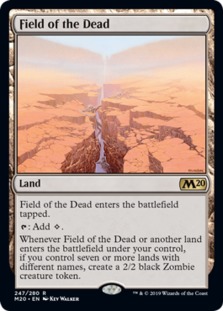

One of the biggest downsides of playing Treasure Hunt is that we can't really play non-lands apart from Treasure Hunt and a couple of copies of our finisher since hitting them with Treasure Hunt would fizzle our combo. Thankfully, we have some solid utility lands that can help keep us alive, with Blast Zone working as removal, Mobilized District offering a reasonable blocker, and Field of the Dead potentially making a ton of Zombies if we happen to live long enough to get it going.
Speaking of Field of the Dead, it's the reason why we're playing so many random one-of lands. The downside is that playing a bunch of random shock lands and buddy lands greatly increases the number of wildcards it takes to build the deck, and while it does technically make the deck better, the number of games that are going to end with us getting to seven different lands and Field of the Dead is probably pretty small. If you're looking to Treasure Hunt on the budget, you can play the same deck but with a mana base that is 46 Islands, four Mystic Sanctuary, and four Reliquary Tower along with whatever other random utility lands you have in your collection replacing Islands.
Cryptbreaker

Zombies only get a single new addition, but it's a good one, with Cryptbreaker being the best Zombie in Zombie tribal back during Amonkhet Standard and a key card in Pioneer and Modern Zombies as well. While not having Amonkhet in Historic means we can't directly recreate the Pro Tour–winning list, Historic Zombies looks fairly solid.

Apart from Cryptbreaker, there isn't really a ton to say about Zombies in Historic. We have a solid curve, and Murderous Rider is a great removal spell since it doubles as a Zombie, but the downside is we only have a single lord in Death Baron. As such, compared to Elves, Zombies is more about grinding out incremental value than winning with a big attack or two backed by a bunch of lords.
Darksteel Reactor

Darksteel Reactor is the epitome of an Against the Odds card, and even then, 20 counters is asking a lot—so much so than when we played it in Modern, we cheated by turning it into an indestructible creature to beat down with, rather than trying to win by getting 20 charge counters on it. That said, there is an easy way to get the 20-charge-counter win with Darksteel Reactor in Historic, but I don't think you're going to like it: you simply play Darksteel Reactor as the win condition in your Nexus of Fate / Wilderness Reclamation deck. Rather than trying to live for 20 turns to get 20 charge counters, you just take 20 turns in a row with Nexus of Fate while the charge counters slowly tick up.

Outside of the Nexus of Fate win, the big problem with Darksteel Reactor in Historic is that it's basically a version of Simic Ascendancy that's harder to win with. Apart from being indestructible, Simic Ascendancy does basically everything that Darksteel Reactor does but better, since putting counters on creatures is a lot easier than putting them directly on an artifact or enchantment. And if we go the proliferate route, Simic Ascendancy works just as well as Darksteel Reactor.

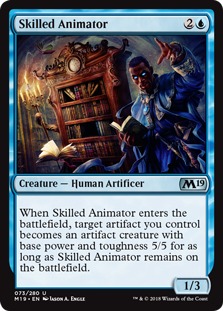

The last way to use Darksteel Reactor is by turning it into a creature with something like Karn, the Great Creator, Skilled Animator, or Animating Faerie. While a 5/5 indestructible beater sounds like a reasonable threat at first glance, considering that Historic will likely heavily feature Teferi, Hero of Dominaria, Teferi, Time Raveler, and Oko, Thief of Crowns—all of which incidentally answer a 5/5 indestructible Darksteel Reactor—I'm not sure the plan will actually be competitive. In another world where planeswalkers didn't answer everything, it could be a fun jank deck. And while it still might be worth trying on Against the Odds, I expect we'll end up disappointed more often than not as our Darksteel Reactor turns into an Elk.
Fauna Shaman

Fauna Shaman is one of the more exciting of the new cards coming to Historic, mostly because unlike many of the other cards we've been talking about, which fit in a single archetype, a ton of decks could theoretically play Fauna Shaman. It's a natural fit for things like Prime Speaker Vannifar decks and can really be played in any creature-heavy deck (especially one with a lot of silver bullet one-ofs) and provide a decent amount of value. However, where I'm most excited about using Fauna Shaman is in a toolbox reanimator style deck, like Golgari Cauldron.

One of the biggest upsides of Fauna Shaman is that along with getting specific creatures we want in hand, it also can put specific creatures in the graveyard, which makes it a great way to fuel a reanimator deck with a combo finish. The idea of Golgari Cauldron is to stock our graveyard with creatures and eventually reanimate Syr Konrad, the Grim with The Cauldron of Eternity. Then, we can cast (or reanimate) Loaming Shaman to shuffle 20-ish creatures from our graveyard into our library and win the game on the spot with Syr Konrad, the Grim damage.



The power of Fauna Shaman is that it allows us to play a lot of one-ofs but still find them consistently, while also filling our graveyard for The Cauldron of Eternity. Creatures like Murderous Rider, Ravenous Chupacabra, Cavalier of Night, and Massacre Girl offer removal, and Golgari Findbroker can get back a The Cauldron of Eternity that we happen to mill over, while the rest of our deck is mostly focused on good value creatures like Jadelight Ranger and Merfolk Branchwalker that can also fill our graveyard. Oh yeah, Doom Whisperer can also be a backup combo kill with Syr Konrad, the Grim, assuming we have enough life to surveil a bunch of creatures into our graveyard.



I was tempted to put Wildgrowth Walker in the main deck, but without knowing what the Historic metagame will look like, it's starting off in the sideboard. Against aggro, it is one of our best cards, although it's pretty lackluster against control. If the Historic meta is filled with aggressive creature decks and Mono-Red Aggro (which seems possible), then cutting some of the slower one-ofs to make room for Wildgrowth Walker in the main deck is probably the way to go.
Kinsbaile Cavalier

Kinsbaile Cavalier is a fun card, although I'm not convinced it actually has a home in Pioneer. Oftentimes with tribal cards, the problem is they don't have enough good tribe members to succeed, but Kinsbaile Cavalier actually has the opposite problem: there are so many good Knight cards in Pioneer that I'm not sure the tribe actually wants a four-mana 2/2 that gives everything double strike. While Kinsbaile Cavalier's ability potentially offers a lot of damage, the downside is that it's only a 2/2, so it dies to basically every removal spell in the format, which makes it easy for opponents to play around it by leaving up something like a Shock. Further complicating matters is Valiant Knight, which fills a similar role (giving up immediate double strike for pumping the team and then offering double strike the following turn with its activated ability). While it's possible that I'm underrating Kinsbaile Cavalier, my guess is that it's more of a fun card for casual Knight decks than something that will be a part of more competitive Knight decks (although I do think Knights will probably be a solid aggro option in Historic).
Black Cards
Apart from Cryptbreaker, which is mostly just for Zombies, we got three other mono-black cards in our initial dump of Historic cards, in Hypnotic Specter, Phyrexian Arena, and Tendrils of Corruption. While both Phyrexian Arena and Hypnotic Specter have the potential to see play in multiple archetypes, maybe the most fun way to play these cards is to toss them all together into a Mono-Black Control shell, with Hypnotic Specter being a living x-for-1, Phyrexian Arena being an insane source of card advantage, and Tendrils of Corruption being a solid removal spell that also helps to ensure we don't accidentally die to our own Phyrexian Arenas.

While the list itself has a lot of one-ofs, which might look a bit strange, there are a couple of reasons for the strange splits. First, without knowing more about what the Historic meta will look like, it's hard to nail down the removal spell slots, so instead of something like four Cast Down, we're playing one Disfigure, one Legion's End, one Cast Down, and one Finale of Eternity. Second, thanks to Phyrexian Arena (and to a lesser extent, Dread Presence), we're likely to see a lot of our deck in any given game, so we'll draw into our one Josu Vess, Lich Knight or one Command the Dreadhorde eventually, and when we do there's a good chance it will close out the game.



While most of the curve feels solid, the two-drop slot in Mono-Black is weird and potentially weak. I decided to go with Yarok's Fenlurker since it works well with Hypnotic Specter (giving us a discard sub-theme) and can actually end up a real threat in the late game with the help of Cabal Stronghold making a ton of mana. That said, I'm not at all confident with the choice. Cards like Blacklance Paragon, Dusk Legion Zealot, Kitesail Freebooter, and Seekers' Squire all could be better than Yarok's Fenlurker, so feel free to experiment. It's also possible that we should just overload on removal for the early game and not worry too much about having a two-mana creature since if we can stabilize the game and stick Phyrexian Arena, there's a good chance the card advantage will carry us to victory.
Ornithopter

While there are a few places where Ornithopter could show up in Historic, ranging from meme-worthy (trying to play Turn 1 Sephara, Sky's Blade with the help of the quad-Ornithopter opening hand) to potentially competitive (some sort of flying tribal deck with Empyrean Eagle), the most obvious hope for Ornithopter is the Historic version of Affinity. Thanks to cards like Steel Overseer and All That Glitters, there are actually quite a few reasons to think the archetype could work in Historic.

First off, the Standard versions of Affinity have to play some really lackluster early-game creatures just to keep the artifact count high, like Locthwain Gargoyle. Ornithopter is a massive upgrade, mostly because it has flying, which makes it a really great backup version of Gingerbrute when it comes to getting in massive attacks with a creature wearing All That Glitters.


Along with Ornithopter, we get a couple of extremely powerful artifact payoffs that rotated from Standard when Throne of Eldraine entered, in Karn, Scion of Urza and Sai, Master Thopterist. Karn specifically is great in our deck. Its floor is making an artifact token that is essentially already wearing an All That Glitters, and we'll often get at least two Karnstructs out of a single Karn, Scion of Urza. Meanwhile, if the game goes long, Karn gives us a steady source of card advantage to fight through more controlling removal-heavy matchups. As for Sai, Master Thopterist, its main value is doubling up our artifacts by making a 1/1 Thopter whenever we cast another artifact, which in turn doubles up the power of our Karnstructs or whatever happens to be wearing All That Glitters. Plus, if things go poorly, we can always start sacrificing artifacts to draw cards and (hopefully) find something like All That Glitters to steal the game.
Hidetsugu's Second Rite

Hidetsugu's Second Rite is a super-unique card. At 95% of the potential life totals between 1 and 20, it does literally nothing at the cost of four mana. On the other hand, when our opponent is at exactly 10 life, it does literally everything (as in killing our opponent) for just four mana. While Hidetsugu's Second Rite is basically unplayable in Modern thanks to fetch lands (which allow our opponent to change their life total at instant speed and fizzle Hidetsugu's Second Rite), things get a lot easier in Historic since neither fetch lands nor pain lands are in the format. This means if we can get our opponent to 10 life during our turn and immediately cast Hidetsugu's Second Rite, very little can go wrong (apart from our opponent doing something crazy like casting a Lightning Strike targeting themselves, which isn't the worst outcome). More importantly, in Historic, we also have the perfect combo piece for Hidetsugu's Second Rite in Torgaar, Famine Incarnate.

The power of Torgaar, Famine Incarnate is that when it enters the battlefield, it can set our opponent's life total to 10 regardless of what their life total was at, pre-Torgaar. One of the traditional problems with Hidetsugu's Second Rite decks is that if our opponent happens to end up under 10 life, it's really, really hard to get them back to 10. Torgaar gets the job done whether our opponent is at 1 or 100!

The main goal of Torgaar's Rite is to be able to cast Torgaar, Famine Incarnate and Hidetsugu's Second Rite in the same turn, since if we put our opponent to 10 with Torgaar and then pass, something like an untapped shock land will undo all of our hard work. As such, we need to flood the board with creatures to make Torgaar cost just two real mana, which means we will only need six total mana to combo kill. That said, if we're in a risky mood, the fastest our deck can pull off the combo is playing Torgaar, Famine Incarnate on Turn 3 (sacrificing a one-drop and either Goblin Instigator or Lazotep Reaver plus the token they make) and then Hidetsugu's Second Rite on Turn 4 to finish the job.
The other nice thing about Torgaar's Rite is that we don't actually need the combo to win. While it is the most fun and explosive thing our deck can do, we can also just power our a Torgaar, Famine Incarnate on Turn 3, follow it up with Rekindling Phoenix on Turn 4, and go with the beatdown plan, which makes Torgaar's Rite more of a solid midrange deck that can also just combo kill opponents on Turn 3 when things go right, which seems like a solid place to be in Historic!
Kiln Fiend

Traditionally, the easiest way to break Kiln Fiend is to play a deck with a bunch of cheap cantrips and then something like Temur Battle Rage to give double strike and trample. Since it only takes three spells to get Kiln Fiend up to 10 power (and even more, if we include some pump spells), it is fairly easy to one-shot an opponent early in the game. While the Historic card pool makes this plan less powerful than in other formats like Modern, mostly because we don't have Temur Battle Rage or Assault Strobe, we can still put together a very aggressive Kiln Fiend deck in the format.

The main goal of Mono-Red Kiln Fiend is to basically build our own version of Temur Battle Rage with the combination of Crash Through and Uncaged Fury, which, with one additional spell (like Rimrock Knight, Shock, or Warlord's Fury), should make for a lethal, trampling Kiln Fiend. The downside of this plan is that it takes a bit of mana to work since Uncaged Fury costs three mana itself. Thankfully, we have ways to cheat on the cost, with Runaway Steam-Kin making our one-mana cantrips free as long as we can get it up to three counters and Dreadhorde Arcanist allowing us to flash back a cheap spell to further grow our Kiln Fiend.


There's probably some potential in going into a second color as well. Blue would give us an extra one-mana cantrip in Opt, although the downside of branching out into a second color is that we lose the mana engine of Runaway Stream-Kin, which really wants out deck to be mono-red, or very close to it.
Captain Sisay

I have no idea how good Captain Sisay will be in Historic. If there's one thing I've learned from Commander, it's that if Captain Sisay sits on the battlefield for a couple of turns, it's likely to generate a huge amount of value. But as a 2/2 for four that doesn't do anything right away, more often than not, it will probably die to a Shock (or get bounced by a Teferi, Time Raveler or Elked by Oko, Thief of Crowns) before doing much of anything. That said, Kethis Combo was one of the best decks in Standard before rotation and probably has a decent shot at being top tier in Historic as well. Captain Sisay does fit the deck's legendary theme—worst case, it's something to exile from our graveyard to cast our more important cards with Kethis, the Hidden Hand, while best case, it manages to stick on the battlefield and tutor up a combo piece before it dies.

Another sneaky home for Captain Sisay is with Niv-Mizzet Reborn. Not only is Captain Sisay a dual-color card that we can hit with Niv-Mizzet, Reborn, but we can also just cast it naturally and use it to find Niv-Mizzet, Reborn or a planeswalker. I wouldn't expect the deck to play the full four copies of Captain Sisay, but as a one- or two-of, it seems like a solid inclusion that could offer a lot of value.

It's also possible that some sort of GWx legends deck could take advantage of Captain Sisay. Shalai, Voice of Plenty offers a good tutorable way of protecting Captain Sisay. And if you get to activate Captain Sisay every turn, you should be able to piece together a win. Remember, Captain Sisay tutors for any legendary card, which means not only creatures but all planeswalkers, removal spells like Oath of Kaya, and legendary sorceries like Urza's Ruinous Blast or Karn's Temporal Sundering.
The bottom line is that Captain Sisay is a very powerful Magic card and very well could see play in Historic, but I tend to be nervous about expensive creatures that need to untap to do anything. One thing we've seen over the past year of Standard is that the combination of cheap removal and heavily played planeswalkers that incidentally answer creatures (basically every Teferi, Oko, Thief of Crowns, etc.) makes it difficult to build around cards like Captain Sisay. Odds are it will be an expensive Elk rather than the sweet value engine it looks like at first glance.
Burning-Tree Emissary

Traditionally, the easiest way to take advantage of Burning-Tree Emissary is to play it in a go-wide aggro deck like 8 Whack, but Historic doesn't really have any Goblin Bushwhackers or Reckless Bushwhackers (although Castle Embereth is solid, and Burning-Tree Emissary could certainly work in some sort of mono-red tokens / aggro strategy). However, we do have a card that rewards us for quickly putting a bunch of creatures onto the battlefield in Embercleave!

Gruul Embercleave is basically Standard Gruul Aggro updated for the Historic format. Thanks to Burning-Tree Emissary, we can potentially be casting Embercleave for just two mana as early as Turn 3, which should be pretty frightening for opponents. Otherwise, we have efficient, often hasty threats at just about every point on the curve, with classics from our last Standard like Rekindling Phoenix and Ghalta, Primal Hunger making their return. If you like smashing face and casting quick Embercleaves, Burning-Tree Emissary is one of the best ways to get there in the Historic format.
Conclusion
Anyway, that's all for today! After being pretty down in Historic over the past few months, the combination of sweet new cards and the announcement that Pioneer is on the way (likely to replace Historic) in the future actually has me interested in the format again. How about you? Are you going to give Historic a shot? What else can we do with the new cards coming to the format? Let me know in the comments! As always, leave your thoughts, ideas, opinions, and suggestions, and you can reach me on Twitter @SaffronOlive or at SaffronOlive@MTGGoldfish.com.





